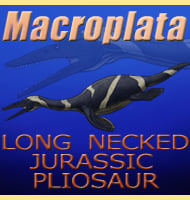Kimmerosaurus
In Depth Because nothing is known about Kimmerosaurus from below the neck vertebrae it is impossible to say exactly how the body of Kimmerosaurus looked. However another plesiosaur from the same formation called Colymbosaurus is known only from its post cranial skeleton. Together these two separate genera may in fact represent the same plesiosaur, but … Read more

